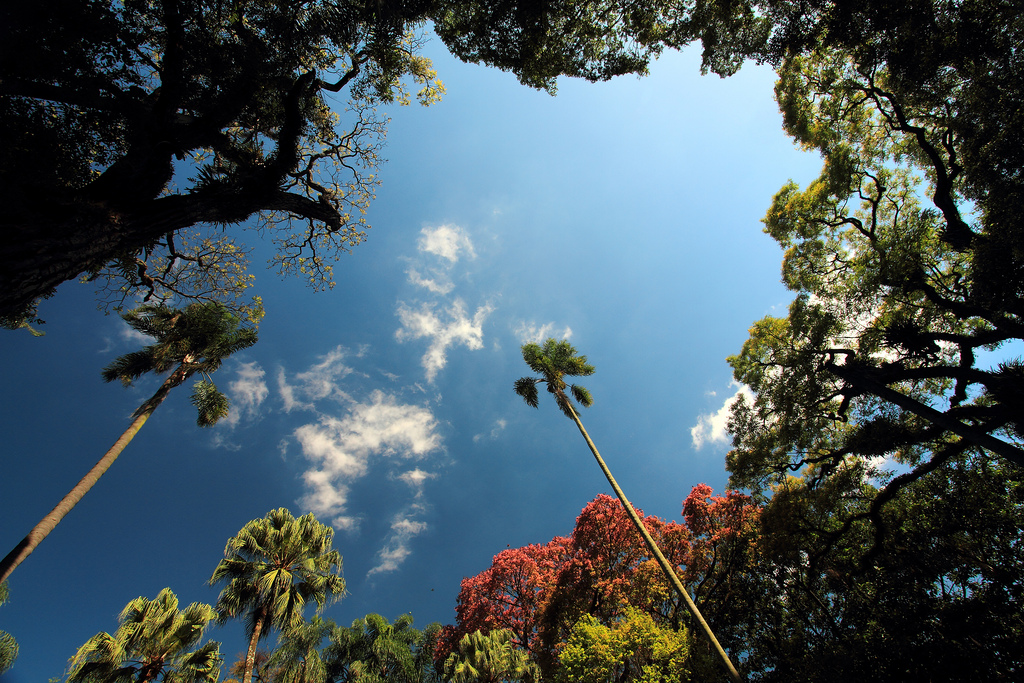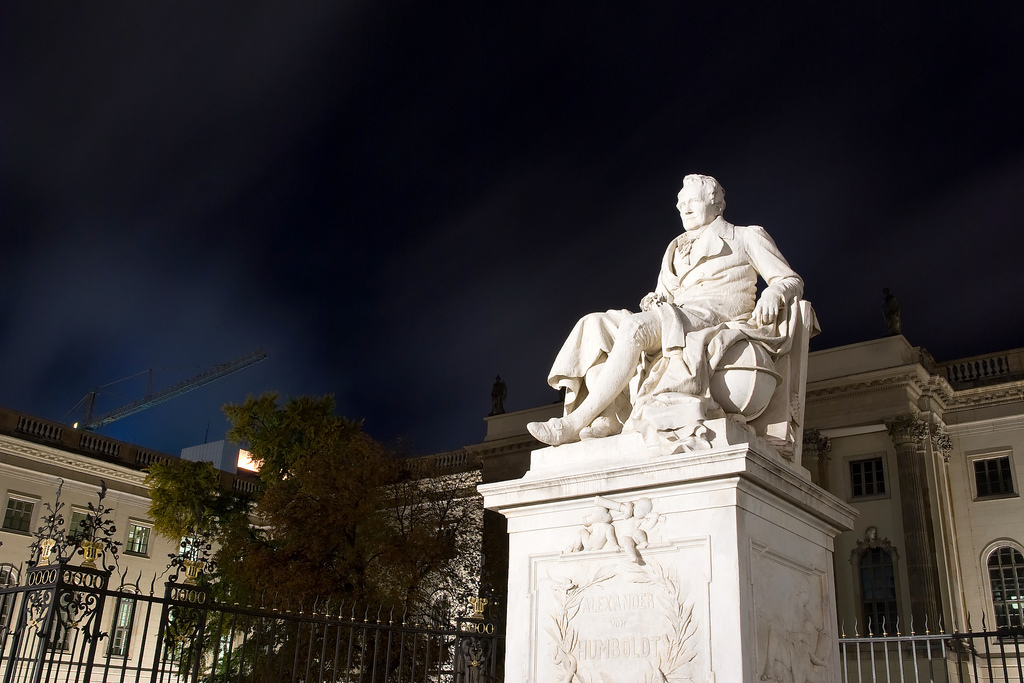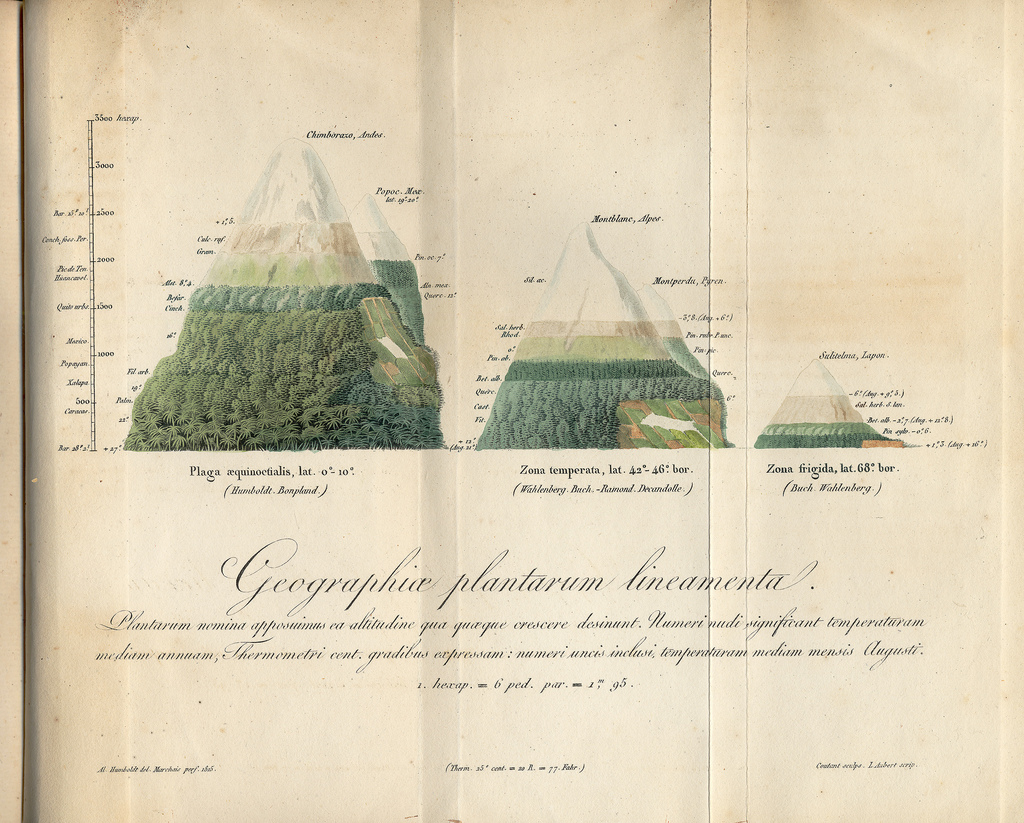
By Maren Meinhardt
The topping out ceremony of the Berlin City Palace in June this year was a grand affair. Berlin’s mayor, Michael Müller, looked on as the wreath floated up towards the half-finished cupola, and Daniel Barenboim conducted the Staatskapelle Berlin in the Andante from Schubert’s Unfinished Symphony.
The Palace, right in the heart of Berlin, had survived the second World War a bombed-out shell. In 1950, the GDR blew it up anyway–it was now a symbol of imperialism. Since 2013, the Palace has been in the process of being rebuilt, at huge national expense. It seems determined to shake off past associations, and, with the appointment of Neil McGregor, the celebrated, outgoing director of the British Museum as its director, is now is set to become Germany’s most prestigious cultural center.
To complete its transformation, the Palace will acquire a new name: it will be known as the Humboldt Forum. The day chosen for its official opening is September 14, 2019–250 years, to the day, that the German explorer Alexander von Humboldt was born.
But who, exactly, is Alexander von Humboldt, the man that MacGregor is leaving the British Museum for? And why is his name suddenly gaining such currency?

On June 5, 1799, Alexander von Humboldt stepped on board the Spanish corvette Pizarro and set off towards the Americas. Contrary to what the name of his ship might suggest, no colonial power had sent him, nor did he represent any political or mercantile interest. Nor, for that matter, was anyone funding him. Instead, Humboldt put his own inheritance in the service of a scientific expedition for himself and his collaborator Aimé Bonpland, a journey that would last five years, the foremost purpose of which would be to satisfy his scientific curiosity.
Humboldt gave up his job as a mining inspector–well-paid and with excellent career prospects in the Prussian civil service–for what sounds like a noble undertaking: the pursuit of science. But really, his motivations were complex and the goal of his journey was to a very high degree unspecified. He later admitted that he “would have sailed to the remotest South Seas, even if it hadn’t fulfilled any scientific purpose whatever”.
As modern travelers who retrace Humboldt’s steps, uncertainty about what we will find is one of very few things uniting us with the man in whose footsteps we follow–footsteps that have, in any case, been cooling for more than two hundred years now, an almost unbridgeable gap in time. When we move through the same geographical spaces that Humboldt traversed, the landscapes, their people and their politics are not those that he encountered. And if the places have changed, so, of course, have we. What, then, is it that we hope to discover?
Upon his death, Humboldt was almost immediately forgotten and his theory of nature as a harmonious, interlocking whole was replaced by a much more savage outlook on life.
It’s easier to make sense of the pull Humboldt exerts if one lets go of the notion that it is a direct function of his achievements as a scientist and explorer. His legacy includes a sprawling body of knowledge, difficult to demarcate or define, that reaches, with apparent ease, from the charge found in the nervous fiber of an electric eel to the distribution of plants across different climate zones; from the bioluminescence of jellyfish to the composition of falling stars. He climbed the Chimborazo, then believed to be the highest mountain on earth.
Earlier, in Venezuela, he had discovered the Casiquiare Canal and so proved the seemingly impossible: that there was a connection between the two great water systems, that of the Amazon and the Orinoco. And much has been made of Humboldt’s influence on Charles Darwin, who took a copy of Humboldt’s account of his travels in South America, the Personal Narrative, with him on board the HMS Beagle.
On closer inspection, though, the triumphalist narrative begins to look just a little less triumphant. The conquering hero on his pedestal dissolves, and instead, the view clears to reveal an altogether more interesting figure.

The Chimborazo, of course, turned out not to be the highest mountain on the planet at all. And Humboldt, in spite of climbing higher than anyone had before him, didn’t reach the top–he had to turn back at around 5,600 meters. The existence of the Casiquiare Canal may well have been doubted in Europe, but local people had long been aware of the connection between the two water systems. As for Darwin, he published On the Origin of Species by Means of Natural Selection in the year that Humboldt died, in 1859. Humboldt’s eclipse was near-total: on his death, the most famous scientist of his day was almost immediately forgotten, his theory of nature as a harmonious, interlocking whole replaced by a much more savage outlook on life. Darwin and Humboldt met once, in 1842. The encounter left Darwin somewhat underwhelmed. He reported that he hadn’t been able to remember anything in particular about his conversation with the great man, except that “Humboldt was very cheerful and talked much”.
Things had once been very different. “How I do wish that one day I could listen to Humboldt talk”, says Ottilie, the sensitive young heroine of Goethe’s novel The Elective Affinities. She was speaking for its author. Goethe, too, had been impatient to meet Humboldt, then a promising young scientist with publications on plants and rocks to his name. Of particular fascination, for Goethe, were Humboldt’s experiments on animal electricity, conducted mostly on frogs’ legs. With their promise to put a finger, or rather a metallic plate, on the exact force that separated a living thing from inanimate matter, they were of the deepest interest to the writer whose most famous character, Faust, is ready to sell his soul to discover “what holds earth together in its innermost core”.
As the celebrated elder statesman of German literature, Goethe held court at Weimar, the center of a loose network of writers who formed the core of what became known as the early generation of German Romanticism. Humboldt was linked both by friendship and by a joint tradition with many of them.
The chance of becoming integrated into such a new and mysterious world offered Humboldt the prospect of transformation, of being not quite who he was. The unknown, shimmering and colorful always seemed enticing to him.
He had grown up in Tegel, just outside Berlin. Feeling “penned in by the sparse sandy nature” of the place, with an emotionally distant mother to match, Humboldt was irresistibly attracted by almost anything that could be described in contrast to his place of birth. When, in later life, he imagined setting up home somewhere–something he often indulged in–what these places all had in common was that they were emphatically not like Tegel.
Among his early escapes had been the salons that proliferated in Berlin towards the end of the eighteenth century. Usually led by clever and accomplished Jewish women, frustrated at being expected to keep to the domestic sphere, they were gatherings that transcended the boundaries of class, gender and money. It was the sort of environment that was alien to everything Humboldt had known from his upbringing, and he urgently wanted to be part of it. He regularly attended the salon of Henriette Herz, as did Dorothea and Friedrich Schlegel, the writer Jean Paul Richter, the poet Friedrich Rückert, and the philosopher Salomon Maimon–an almost perfect roll-call of early German Romanticism. Henriette taught Humboldt some Hebrew, and he, in turn, wrote long letters to her from Tegel, which he post-marked, in Hebrew script, as from “Tedium Towers.” The chance of becoming integrated into such a new and mysterious world offered Humboldt the prospect of transformation, of being not quite who he was. The unknown, shimmering and colorful always seemed enticing to him.
While Wilhelm, his elder brother, prepared for marriage by choosing a sofa for his living room and ordering a Wedgwood tea pot, Alexander, in his letters, advanced different and rather alarming domestic designs. These included triangular arrangements involving various male love interests–Humboldt, for example, thought nothing of writing to the fiancée of his intimate friend Reinhard von Haeften that he had found the perfect house where the three of them should settle down together in Switzerland. These are unsettling to read about as they carry the potential, if not certain, promise of pain. But even this would have been more bearable to Humboldt, one feels, than the idea that his life should run along conventional, predictable lines.
He shared something else with the German Romantics that might be harder to fathom today: a preoccupation with mining. Goethe himself, as privy councillor to the Duke of Saxe-Weimar-Eisenach, was in charge of a mine just outside Weimar, at Ilmenau. The mine underperformed persistently, and Goethe hoped to avail himself of Humboldt’s advice. Humboldt had graduated from Abraham Werner’s mining academy at Freiberg, the first in Germany of its kind. Freiberg went on to become something of a crucible for German Romanticism: the poets Novalis and Theodor Körner, and the Romantic philosopher Franz von Baader were alumni, too.
For a nation that is in search of an identity that is not so largely defined by the events of the twentieth century, the relief with which Germans embrace Humboldt is almost palpable.
It was Novalis, himself a mining inspector, who introduced the motif of the Blue Flower, which became the most potent emblem of German Romanticism. It makes its first appearance in Novalis’s fragmentary novel Heinrich von Ofterdingen, where it beckons the young protagonist deep inside the mountain. The Blue Flower signifies the Romantic desire for a deeper, metaphysical understanding of the self, and it points the way where it may be found: inside the earth, where nature hides her secrets.

Humboldt never set out to measure the height of the Chimborazo–he didn’t even mean to go to South America in particular. His destination came about more by chance than by anything else: a prolonged, almost comical, switch from one possible destination to another, as Napoleon’s campaigns, as if designed for the very purpose, proceeded to render each of them in turn impossible. A plan to sail to the Danish West Indies was replaced by a scheme to travel to Egypt in the entourage of Lord Bristol, Bishop of Derry. This in turn was superseded by the idea of travelling to the South Pole with the French navigator Louis Antoine de Bougainville, and then by a project to explore the High Atlas Mountains in Morocco. When Humboldt did finally cross the Atlantic on the Pizarro, he expected to travel to Cuba–it was an outbreak of typhus on board that determined their final disembarkation point in Cumaná, in today’s Venezuela.
He was delighted with this, just as he would have been with any place that was wild and unexplored, a site of the mind and the imagination. He did not just want to gather and catalogue rocks and plant specimens (though he did that, too–and as thoroughly and extensively as one could possibly have asked for), and to impose the objective measures and scientific method of the Enlightenment on what he saw. His motivation was one that had been shaped by German Romanticism: the hope that he, in turn, would be changed by what he found. Goethe understood this, allowing his character, Ottilie, to explain: “Palm trees will not allow a man to wander among them with impunity; and doubtless his tone of thinking becomes very different in a land where elephants and tigers are at home.”
And perhaps this promise of transformation motivates those who travel in his footsteps, too–particularly those who are German. Humboldt, now more than 150 years dead, is shaping up to be in many ways the ideal German. For a nation that is in search of an identity that is not so largely defined by the events of the twentieth century, the relief with which Germans embrace Humboldt is almost palpable. His track record is remarkably unblemished by modern standards. There is not a single anti-Semitic remark, as far as anyone can see (his brother Wilhelm falls short in this respect). There his outspoken opposition to slavery, and a pleasing rejection, once he had outgrown it, of aristocratic privilege. All this against a background of ecology and the embrace of nature, a preoccupation as unobjectionable as it is deeply anchored in the German cultural tradition. Small wonder that the Berlin City Palace will bear Humboldt’s name.

